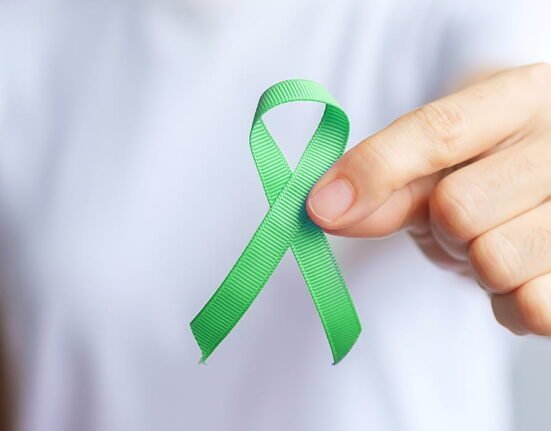Imagine standing alone with a truth so core to your being, it feels like your bones know it – yet to everyone else, it’s invisible. That’s the starting line for so many trans people claiming their identity. It’s rarely a straight path. Honestly, it’s more like feeling your way through your doubts and discoveries, past society’s roadblocks, fighting for every bit of self-acceptance you finally earn. Each person’s walk is their own, sure, but those shared battles? They weave us together. And in the middle of it all, you see this raw truth: how tough the human spirit can be, and how badly we all just ache to be seen… really seen… for exactly who we are.
Beyond the Binary: Identity Reconsidered
Old ideas of gender as a simple male/female binary don’t hold up when faced with the lived realities of trans men and trans women. Their experiences show us a powerful truth: gender identity is a deep, intrinsic part of the self, something that often emerges on its own, separate from biology or what society expects. Grasping this complexity isn’t just academic – it’s essential for building supportive families, making healthcare work, and fostering truly inclusive communities.
Understanding the Terrain: Stress, Strength, and Intersectionality
We now understand that the challenges trans people face don’t come from being trans itself, but mostly from societal stigma and discrimination. Picture it this way:
The Heavy Load of Minority Stress:
Trans individuals often deal with a constant background hum of stress, from outright discrimination (distal stressors) to those inner battles with self-doubt or fear of rejection (proximal stressors, like internalised transphobia). This framework, first laid out by Meyer (2003), explains the social, psychological, and structural factors behind mental health inequalities facing sexual and gender minority populations.
The Strength of Resilience:
Importantly, this isn’t just a story of struggle. Trans people build remarkable strength. Connection with community, pride in identity, and finding meaning in their experiences act like strong shields, leading to incredible resilience and growth.
Layered Lives, Layered Challenges:
A Black trans woman’s experience isn’t the same as that of a white trans man or a disabled non-binary person. Intersectionality – how race, class, sexuality, and ability mix with gender identity – shapes every aspect of the journey. Overlooking this means missing the mark on real support.
The Heart of the Journey: From Knowing Inside to Being Outside
Coming in that Awakening Moment:
For many, it starts with a quiet, persistent inner knowing – a feeling that the gender assigned at birth just doesn’t fit their internal reality. This awareness can appear in early childhood (often around 3-5 years old) or much later. While some experience significant distress (gender dysphoria) from this mismatch, remember this: not all trans people do, and not having dysphoria doesn’t make their identity any less real.
Stepping Into the Light:
This crucial phase involves making your outside match your inside – a new name, pronouns, appearance, and presentation. It’s not just about clothes; it’s about easing the exhausting gap between who you are inside and how the world sees you. It’s a profound act of claiming yourself. Research leaves no doubt: support during this phase, especially from family, is the most important thing for positive mental health outcomes.
Medical Pathways:
Hormone therapy or surgeries are deeply personal decisions, certainly not prerequisites for being trans. Access varies wildly based on resources, healthcare availability, and personal desire. The evidence shows: when it’s part of an individual’s authentic journey, medical transition makes a huge difference to mental well-being, easing anxiety, depression, and suicidal thoughts (Tordoff et al., 2022). But these benefits only really come with social acceptance – medical steps alone won’t fix everything in an unsupportive world.
Roadblocks to Self-Love: Why Acceptance Takes Work
The path to self-acceptance has bumps:
- Systemic Walls: Discriminatory laws around IDs, spotty healthcare access, unsafe schools, and workplace bias put up daily barriers and feed constant insecurity. According to The Trevor Project’s 2024 National Survey, nearly 40% of LGBTQ+ youth had serious thoughts about attempting suicide in the past year, with transgender and nonbinary youth feeling this even more keenly (The Trevor Project, 2024).
- The Family Crucible: Acceptance or rejection at home changes everything. Family support massively lowers the risks of depression and suicide while lifting self-esteem. Rejection, especially from parents, has heartbreaking consequences. Family understanding often takes time – education, meeting other LGBTQ+ people, and supportive resources matter.
- The Voice Inside: Internalised transphobia – taking in society’s negative messages – breeds shame and self-doubt (“Am I trans really?”). Fighting this off requires pushing back against the narrow, cisnormative ideas of “authenticity” pushed onto trans individuals.
Seeds of Strength: How Resilience Grows
Even with the obstacles, trans communities show amazing resilience:
- Finding Your People: Connection with other trans people, whether nearby or online, provides validation, real-world advice, and a vital sense of belonging. Mentorship and witnessing others thrive give real hope.
- Owning Your Pride: Moving beyond tolerance to genuine pride in one’s trans identity changes lives. Getting into trans history, art, culture, and advocacy builds this pride, turning personal experience into fuel for strength and purpose.
- Support That Sees You: Gender-affirming therapy is key. It validates identity while equipping people to navigate minority stress (Meyer, 2003). Good approaches include tackling internalised stigma, healing family bonds, and forging community connections.
Building a World That Accepts: What’s Needed
Supporting trans identity development calls for big shifts:
- Healthcare That Gets It: Providers have to use correct names/pronouns, offer competent, respectful care, and put the patient first. Training in cultural humility and trauma-informed care is essential.
- Spaces That Welcome Everyone: Schools and workplaces need strong anti-discrimination policies, inclusive facilities, solid diversity training, and active allyship. This protects trans individuals and makes things better for the entire community.
- Policies That Protect: Advocacy for solid legal protections, accessible healthcare coverage (including transition-related care), and less red tape for legal gender recognition is critical to break down structural barriers.
The Takeaway
The journey of trans identity formation and self-acceptance shows human courage in the face of immense complexity. While stigma and systemic barriers stick around, better understanding and stronger support networks shine a light of real hope. This isn’t about pathology; it’s about the rich, beautiful diversity of human experience. Authentic gender identity earns respect and celebration. When trans individuals get the support they need to become their true selves, we all gain. Their journeys deepen our collective understanding of what it means to be human, showing us that the greatest freedom lies in being accepted, exactly as you are.
References +
- Meyer, I. H. (2003). Prejudice, social stress, and mental health in lesbian, gay, and bisexual populations: Conceptual issues and research evidence. Psychological Bulletin, 129(5), 674–697. https://doi.org/10.1037/0033-2909.129.5.674
- 2024 National Survey on LGBTQ+ Youth Mental Health. (n.d.). 2024 U.S. National Survey on the Mental Health of LGBTQ+ Young People. https://www.thetrevorproject.org/survey-2024/
- Tordoff, D. M., Wanta, J. W., Collin, A., Stepney, C., Inwards-Breland, D. J., & Ahrens, K. (2022). Mental health outcomes in transgender and nonbinary youths receiving Gender-Affirming Care. JAMA Network Open, 5(2), e220978. https://doi.org/10.1001/jamanetworkopen.2022.0978













Leave feedback about this